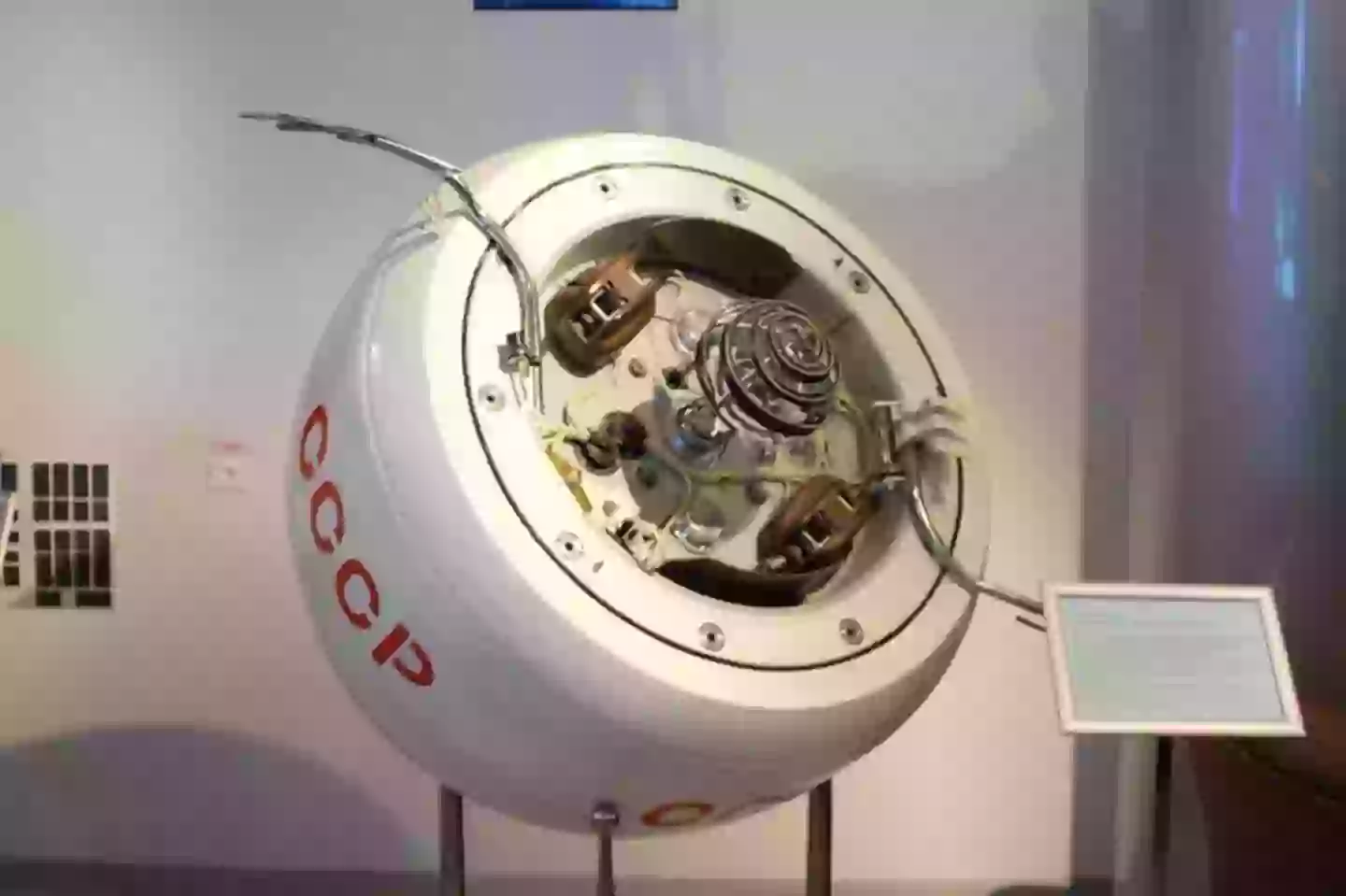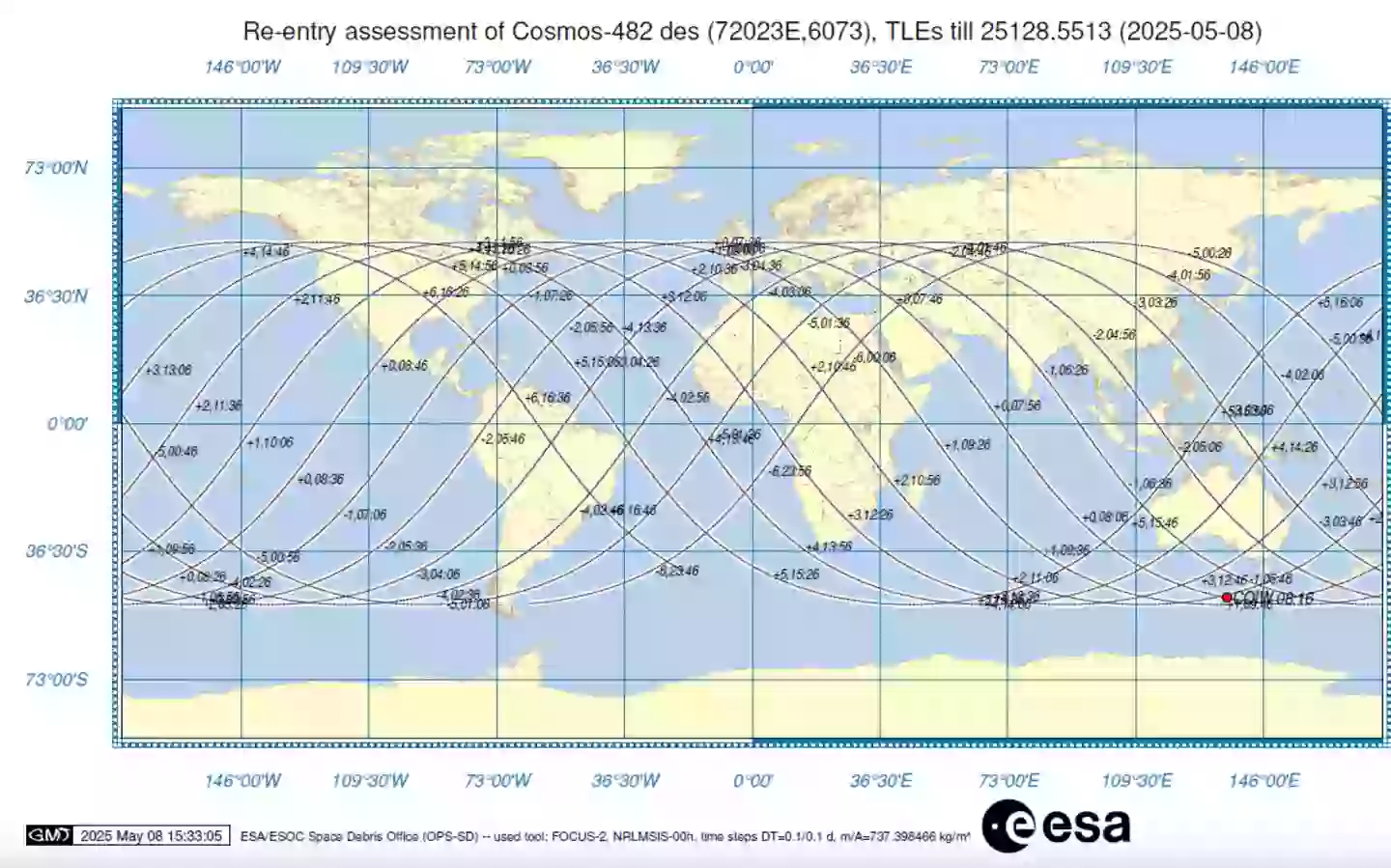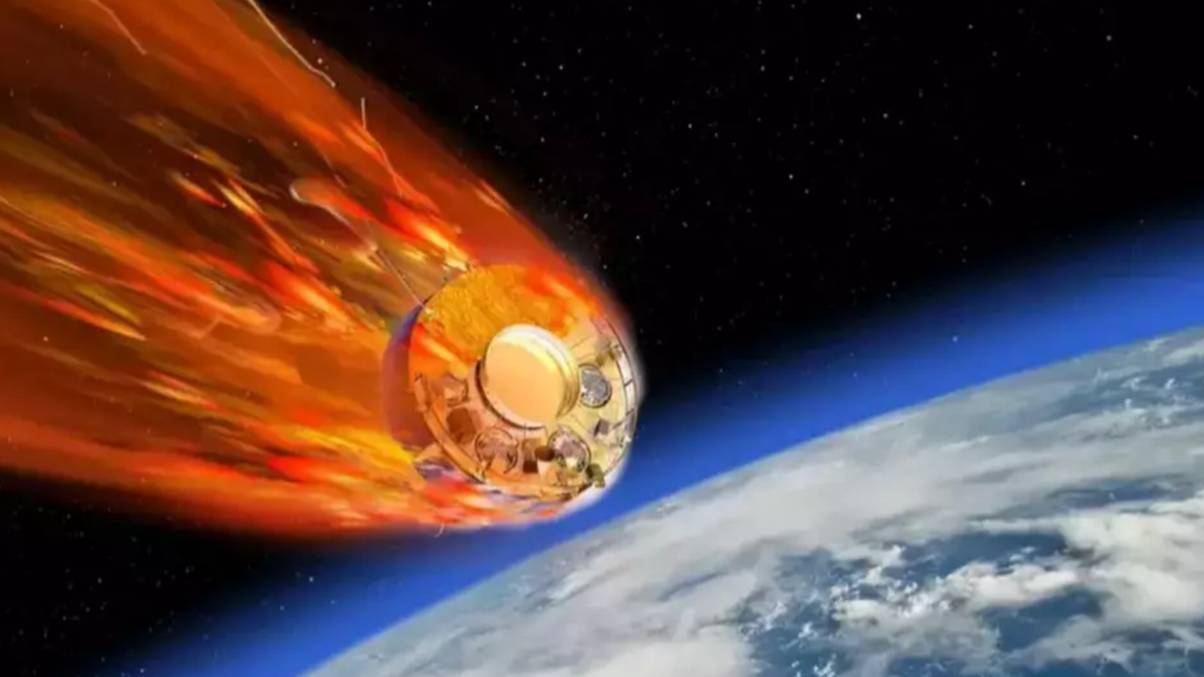Countdown Begins: When and Where Could This Rogue Spacecraft Make Its Dramatic, Unpredictable Return to Earth?
So, here’s a wild bit of cosmic irony for you—an ancient Soviet spacecraft, launched over half a century ago with dreams of touching down on Venus, is finally deciding to call it quits by hurtling back to Earth… and guess what? The UK is chilling right in the potential splash zone. Yeah, Kosmos 482 was supposed to end its days as a Venus lander, but it just couldn’t escape low Earth orbit, hanging around like that one friend who never quite leaves the party. Now, after 53 years of orbiting aimlessly, it’s set for an uncontrolled re-entry, and honestly, it feels like waiting for a pie to drop—except this pie weighs over a thousand pounds. Thankfully, the European Space Agency isn’t losing much sleep, telling us the odds of significant damage are low—still, the crash site could literally be anywhere on the globe, from London’s busy streets to the remote border of Argentina and Chile. So, should you watch the skies tomorrow, or just carry on like usual? Well, with the chances of getting hit by falling space junk being about one in 100 billion, and you being 65,000 times more likely to get struck by lightning, maybe it’s not time to start ducking yet—but hey, you might wanna keep an eye on those “prediction graphs” ESA’s been updating obsessively. Who said space isn’t exciting? LEARN MORE
The uncontrolled re-entry of a spacecraft launched over half a century ago is expected to take place tomorrow and the UK falls within its potential crash area.
53 years ago, a Soviet Venera landing capsule named Kosmos 482 was launched – it was meant to land on the planet Venus, but failed to escape low Earth orbit.
Experts at the European Space Agency (ESA) believe that the chances of the spacecraft causing significant damage is fairly low.
While some have not ruled out this possibility, diagrams reveal that the crash could occur anywhere in the world, from London to the South American border between Argentina and Chile.
Predictions of the spacecraft’s landing location and time are becoming more precise with each update from ESA, with the agency also sharing prediction graphs of the spacecraft’s possible crash points.

Venera-4 model similar to the Kosmos 482 that was launched in the early 1970s and will come crashing down to Earth on Saturday 10 May (ESA)
Where will Kosmos 482 land?
Scientifically, it is believed that the descent craft will come down at a point between 52 degrees north and south of the equator.
The 52nd parallel north passes through the likes of North London in the UK, Netherlands, Germany, Poland, and even Russia.
This also goes across areas of Asia, the vast Pacific and Atlantic Oceans, and even North America.
On the other hand, the 52nd parallel south goes through parts of Chile, Argentina, the Falkland Islands and the Atlantic Ocean.
Its exact landing point will be more specifically mapped out as we approach the time.

The latest ‘ground track’ predicts the satellite to break up at the red dot, though its landing location is still unknown (ESA)
Kosmos 482 re-entry tracker
The re-entry tracker is documenting every detail that scientists are learning about the spacecraft.
Its landing could be influenced by space weather, though the difficulty of predicting the atmosphere and unknowns with the object itself and the way it’s facing could prove to be an obstacle.
Based on scientists’ latest predictions, the object could reenter Earth’s atmosphere at an uncertainty window of 8.61 hours before or after the predicted time.
The tracker reveals that the landing module could theoretically reach our planet’s surface in one piece instead of breaking and burning up, which could cause harm.
However, the website explains: “The annual risk of an individual human being injured by space debris is under one in 100 billion.
“In comparison, a person is about 65 000 times more likely to be struck by lightning.”
You can keep up with it on the ESA website, as the agency has been updating fans on the spacecraft’s placement on its website, providing a blog and live prediction diagrams to visualise its landing.

The exact location of Kosmo 482’s landing is still unknown (Getty Stock Image)
What time will Kosmos 482 land?
Similar to the location of its landing, the timing is unpredictable, though the ESA’s margin of error is getting smaller with each update.
The latest update, made on Thursday (8 May) at 18:30 CEST, predicts that the descent craft’s reentry will be at ’08:16 UTC (10:12 CEST) on 10 May 2025′.
The ESA further states: “The uncertainty in this prediction is now +/- 8.61 hours.”
While satellites and rocket parts of various sizes reenter the atmosphere every other day, small-sized objects also tend to come into our atmosphere more often.
These have little impact on us on the ground, but this spacecraft, around 1,050 pounds in weight, may not break up at all upon reentry as it is cloaked in a protective heat shield.
If you’re worried about this space object falling out of the sky anywhere near you, don’t fear, as ESA revealed that the annual risk of one getting injured by space degree is ‘under one in 100 billion’, with it being 65,000 times more likely to be struck by lightning.











